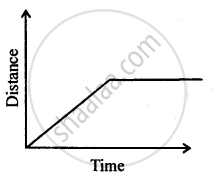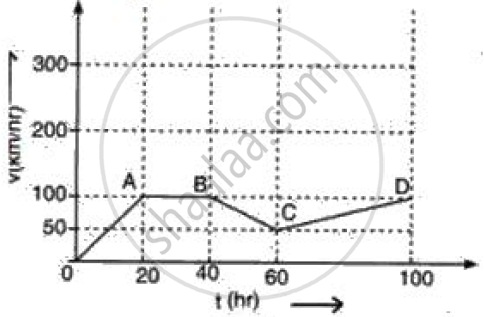Advertisements
Advertisements
प्रश्न
Can you suggest the kind of motion of a body from the following distance – time graph?

उत्तर
Distance – time graph in the figure shows that initially, the body is in uniform motion i.e. it covers equal distance in equal intervals of time.
From O to A, the body is in uniform motion, and from A to B, the body is at rest.

APPEARS IN
संबंधित प्रश्न
What can you say about the nature of motion of a body if its displacement-time graph is A straight line parallel to the time axis?
What can you say about the nature of motion of a body if its displacement-time graph is A straight line inclined to the time axis with an obtuse angle?
Explain the following concept in your own words with everyday examples:
Distance
A motorbike running at 90 kmh−1, is slowed down to 54 kmh−1 by the application of brakes, over a distance of 40 m. If the brakes are applied with the same force, calculate
- total time in which bike comes to rest
- total distance travelled by bike.
A 50 m long train passes over a bridge at a speed of 30 km/h. If it takes 36 seconds to cross the bridge, calculate the length of the bridge.
The figure represents graphically the velocity of a car moving along a straight road over a period of 100 hours.
Calculate the distance travelled in the last 40 h.
The table below shows the distance travelled by two vehicles A and B during each second:
| Time (s) | 0 | 1 | 2 | 3 | 4 | 5 | 6 | 7 |
| Distance travelled by A (m) | 0 | 20 | 80 | 180 | 240 | 300 | 360 | 420 |
| Distance travelled by B (m) | 0 | 10 | 40 | 90 | 160 | 250 | 360 | 490 |
Give the value of the velocity at which they are meeting
A particle is moving in a circular path of radius r. The displacement after half a circle would be
______ is the length of the actual path covered by a body.
If the displacement-time graph of a particle is parallel to the time axis, the velocity of the particle is ______.
